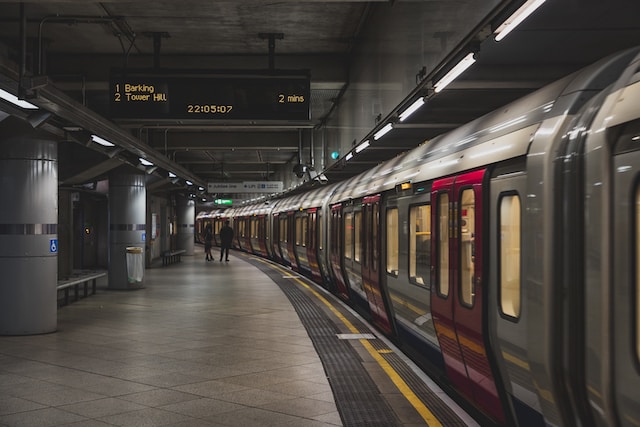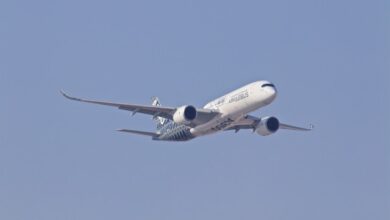The Definitive Guide to Traveling on Dubai’s Red Line Metro

The Dubai Metro’s Red Line is a vital part of the city’s transportation network, connecting key areas across Dubai. Inaugurated in 2009, it was the first metro line in Dubai and is currently the longest single driverless metro line in the world according to the Guinness World Records.
The Red Line runs along Sheikh Zayed Road for most of its route, starting from Rashidiya in eastern Dubai and ending at Jebel Ali Free Zone in the southwest. Key stops along the way include the Dubai International Airport terminals, Burj Khalifa/Dubai Mall station downtown, and the Mall of the Emirates. An extension called Route 2020 opened recently, connecting Nakheel Harbour and Tower station to the Expo 2020 site.
With 49 stations spanning nearly 90 km, the Red Line provides an efficient way for residents and visitors alike to traverse Dubai without the hassle of driving. Air-conditioned trains arrive every few minutes during peak times, offering a comfortable ride between destinations.
Detailed description of the route covered by Dubai’s Red Line Metro
Spanning nearly 90 kilometers, the Red Line is the longest of Dubai’s two metro lines. It connects Dubai’s eastern neighborhoods with the city center and continues down Sheikh Zayed Road through the downtown and coastal areas before turning inland to end at Jebel Ali.
Starting from Rashidiya, the Red Line has stations in the residential area of Mirdif before heading south through the airport. After serving Terminals 1, 3 and the new Concourse D station, it continues along Airport Road and turns onto route D 89 (Sheikh Rashid Road).
The metro then runs along Sheikh Zayed Road, the main highway through Dubai’s center. Key stops here include Burjuman with connections to the Dubai Mall and Burj Khalifa as well as Financial Center and Emirates Towers stations surrounded by commercial towers. Further along, the line reaches Nakheel Harbour and Tower before the Expo 2020 station added recently.
Continuing parallel to Sheikh Zayed Road, the Red Line passes by the Dubai Internet City and Dubai Marina neighborhoods. Beyond the last free zone station of Jebel Ali, the trains turn northwards to end at the Jebel Ali Depot.
Explanation of the comfort and convenience offered by Dubai’s Red Line Metro
The Dubai Metro offers a comfortable and convenient transportation option for getting around the city. Air-conditioned trains arrive every 6-8 minutes during peak times and 10-15 minutes during off-peak hours. This high frequency means passengers rarely have to wait long for the next train.
Inside the trains, cushioned seats, automated route maps, and dedicated spaces for strollers/wheelchairs ensure a comfortable ride. Free WiFi keeps passengers connected, while charging points allow devices to be powered up during the journey. Trains also have dedicated carriages for women and children for additional privacy and comfort.
All metro stations are conveniently located close to main attractions and provide easy access between platforms via escalators, elevators and bridges. Clear signage in English and Arabic direct passengers to the correct platforms. Furthermore, many interconnected stations and footbridges allow for quick transfers between metro lines or other transport modes like buses.
Description of the accessibility and affordability of Dubai’s Red Line Metro
Dubai has designed its metro system to be highly accessible and affordable for all residents and visitors. Level entry and exit points, ramps, elevators and tactile guidance make the Red Line metro fully wheelchair and stroller accessible. Trains have dedicated spaces for wheelchairs, and most stations have staff on hand to provide assistance when needed.
Visually impaired passengers can use the tactile guidance paths and braille signage installed throughout stations. Audio announcements on trains and platforms ensure those with limited vision can ride the metro independently and safely.
For affordability, the Red Line metro uses a simple zone-based fare system with NOL cards. Fares start from AED 3 for a one zone trip, going up to AED 7.5 for the longest trips. NOL cards can be topped up easily and offer a lower fare per trip compared to paper tickets. There are also special discounted rates for students and senior citizens. Compared to Dubai’s taxis which charge AED 12-15 for minimum fare, the metro provides an very affordable option for price-conscious travelers. Unlimited daily and monthly passes allow frequent travelers to maximize savings. Overall, the Red Line’s accessibility features and low fares make navigating Dubai easy for visitors and residents alike.
Showcasing cultural and tourist attractions accessible via Dubai’s Red Line Metro
Dubai’s Red Line metro provides easy access to some of the city’s top cultural and tourist destinations. Key attractions like Burj Khalifa, Dubai Mall, Dubai Opera and the Dubai Fountain are directly accessible from the Burj Khalifa/Dubai Mall metro station.
Al Jafiliya station connects to the sprawling Zabeel Park, perfect for an afternoon picnic. The metro is also a quick ride to cultural hotspots like the Dubai International Financial Centre with its art galleries and Dubai Design District showcasing local creativity.
Foodies can hop off at the Financial Center station to explore Dubai’s unofficial “Little India” in Karama or Satwa’s bustling streets lined with restaurants. Emirates Towers and Emirates Golf Club stations will drop you minutes away from these iconic Dubai landmarks.
The Red Line also serves popular shopping and entertainment zones like Mall of the Emirates, Ibn Battuta Mall, Dubai Marina Mall and various souks. Recent additions like the Museum of the Future and Expo 2020 are now just a direct metro ride away.
Emphasizing the safety measures and security features of Dubai’s Red Line Metro
Safety and security are top priorities for Dubai’s Red Line Metro. Station design incorporates international safety standards like fire prevention systems, emergency exits, and alarm points while operations adhere to strict health and safety policies.
All stations and trains have CCTV cameras monitored 24/7 by a central command center for rapid response to any incidents. Security personnel and police patrol metro stations while RTA inspectors and attendants are present on every train. Emergency call points connect directly to the operations center for urgent assistance.
The fully automated, driverless train system also improves safety by eliminating risks of human error. Sophisticated technology controls train movements, speed and platform stops. Barriers prevent access to tracks and other restricted areas. In the unlikely event of emergencies, emergency stop buttons halt train motion instantly.
The metro’s exemplary safety record has earned international recognitions like the prestigious Sword of Honour for safety practices. Passengers consistently rate it as one of the safest transport systems, especially for women, children and vulnerable groups. Strict enforcement of rules combined with extensive infrastructure and personnel safeguards make the Red Line metro a secure way to travel in Dubai.
Conclusion
Dubai’s Red Line metro provides an efficient, comfortable, accessible and safe transportation backbone connecting key parts of the city. Air-conditioned trains arrive frequently at stations situated close to major attractions, whizzing passengers to their destinations for an affordable fare. State-of-the-art trains offer a smooth ride with amenities catering to a variety of needs while accessibility features ensure passengers of all capabilities can ride with ease. Safety and security provisions give additional peace of mind when using the metro system. Whether you are a tourist looking to explore iconic sites or resident commuting to work, Dubai’s Red Line metro offers the perfect way to navigate this vibrant metropolis.



